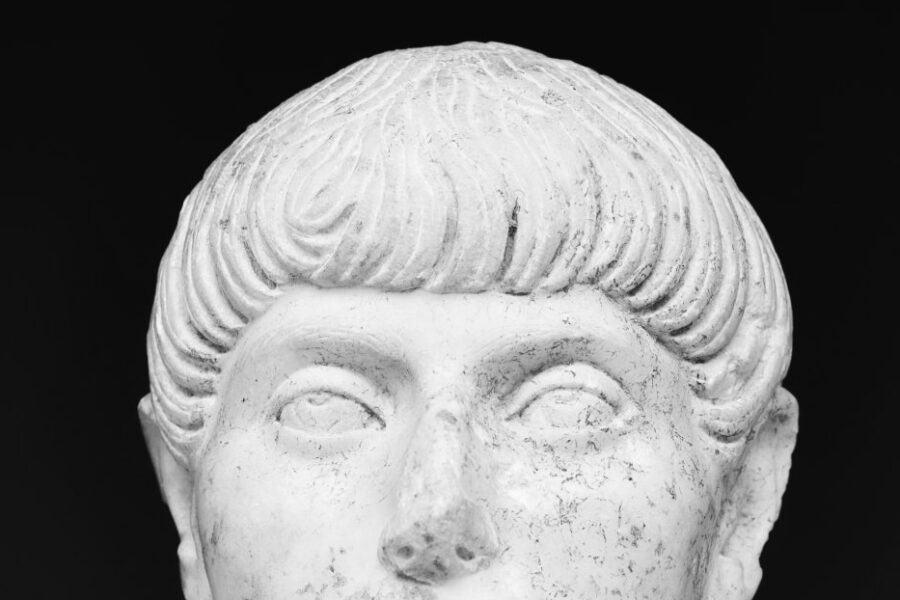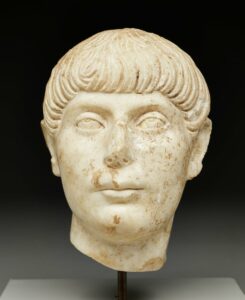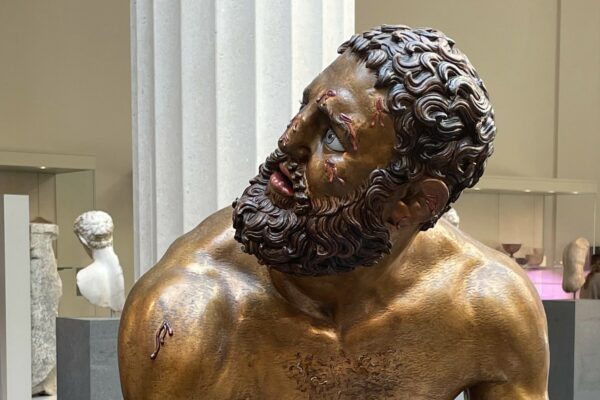
Acquisition no. 6: A museum information sign for a portrait of an unknown young man, who looks like he did all the drugs.
This episode of Honest Museum Signs brought to you by CLAS-C 361 Ancient Roman Revolutions.
Social media is full of series that feature the greatest works of ancient art. This is not one of those series. This is Honest Museum Signs, a series devoted to the belief that with ancient artifacts, as with everything else, “they can’t all be winners.” Here we plumb the bottom of the ancient barrel to present artistic oops-i-daisies, along with the honest museum information that reflects what archaeologists are really thinking when they analyze these misfires.

Forget lead poisoning in the water supply—the Fall of the Roman Empire clearly can be explained by the shallowness of this guy’s gene pool.
Dallas Museum of Art; 2nd c. CE
This is a portrait of a man. He presumably was a real someone, somewhere, at some point, unless, of course, he wasn’t. His facial expression is timeless: it is the same one that the British family makes in their portraits, as they look slightly over the artist’s shoulder and plead with their gods “please, please let this one make me look a little less inbred.” Obviously their prayers go unanswered. His face looks like, when making the portrait’s model, the original artist worked in the dual media of clay and a lot of wine, and then after he passed out drunk in the gutter, his apprentice came in to actually carve the marble and “did his best.”
A lot of the oddities of this portrait can be attributed to the fact that it is probably re-carved from an earlier bust. The weird nasal profile, the oddly sunken cheeks, the chin that sticks out from his neck like a boil: all of these most likely resulted from the artist carving this face out of someone else’s larger face. The birds nest of hair on his right side also results from this process. One imagines a dialogue where the patron demands “Give him Augustus’ famous crab-claw hair swoop!” And the artist protests “Um, there really isn’t enough space for that…” And the patron retorts “Give him a crab-claw or I’ll stuff you full of crab-claws like an entree!” And the artist goes to work, muttering “Just wait until he leaves and I get my wine out…”
And then at some point, someone sliced the back of the portrait’s head off and used a wooden dowel to stick it on another portrait’s body, like some horrifying ancient true crime reenactment.

The Ancient Romans took their anti-mullet initiatives very seriously.
Photo credit: Dallas Museum of Art Online Catalog.
Share on Instagram, or really wherever you want.


